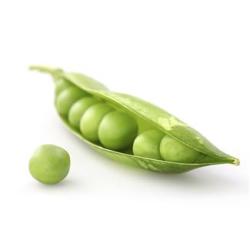Source Institutions
Source Institutions
Add to list Go to activity
Activity link broken? See if it's at the internet archive

This modeling activity allows learners to discover for themselves what Mendel uncovered in his famous pea experiments. By modeling Mendel's pea experiments, learners will form their own explanations for the result of crossing a true-breeding round pea plant with a true-breeding wrinkled pea plant (the F1 generation) and for the results of allowing an F1 pea plant to self pollinate (the F2 generation). They will then compare their explanations to Mendel's own conclusions. This is an excellent introduction to Mendelian genetics which generates discussion and stimulates interest in Mendel's principles. Learners are encouraged to use the same observation and critical thinking skills that Mendel used. This activity can be instructor-led as a demonstration or conducted by groups of learners.
- 45 to 60 minutes
- 45 to 60 minutes
- $1 - $5 per group of students
- Ages 14 - 18
- Activity, Demonstration, Experiment/Lab Activity, Lesson/Lesson Plan
- English
Quick Guide
Materials List (per group of students)
- garden peas (purchased at local garden/feed store)
- aluminum foil
Subjects
-
Life Sciences
-
Diversity of Life
- Plants
-
Heredity and Genetics
- Patterns of Heredity
-
Diversity of Life
-
Mathematics
-
Data Analysis and Probability
- Data Analysis
- Data Collection
-
Data Analysis and Probability
-
The Nature of Science
-
The Scientific Process
- Conducting Investigations
- Gathering Data
- Formulating Explanations
- Communicating Results
-
The Scientific Process
Audience
To use this activity, learners need to:
- see
- touch
Learning styles supported:
- Involves teamwork and communication skills
- Involves hands-on or lab activities
Other
This resource is part of:
Access Rights:
- Free access
By:
- Nolin, Jeanette
Rights:
- All rights reserved, Access Excellence @ the National Health Museum, 2009
